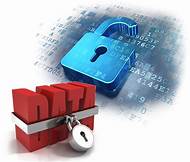Data Security and Data Integrity
The protection of data from unauthorized users is referred to
as data security. Only authorized users are allowed to access the data. The DBA
or department head can access all of the data in the database. Some users have
access to only retrieve data, while others have access to both retrieve and
modify data. The term "data integrity" refers to the fact that the
data in a database is both correct and consistent. The data in the database
must meet specific types of procedures for this to work (rules). A database's
data must be accurate and consistent. A database management system (DBMS) can
implement such limitations in a variety of ways (rules). Rules, such as Primary
Key, Secondary Key, and Foreign Key, can be used to implement it. In a
database, this increases data integrity.
Organizations confront a heightened risk of data leaks and
misuse as the world becomes more digital and employees utilize mobile phones
and other such devices at work. Prohibiting the use of cell phones and other
such gadgets at work would be a bad idea, as it would make the company less
employee-friendly. As a result, businesses struggle to keep their data safe and
strike a compromise between data security and integrity and employee
flexibility and freedom. Theft and misuse of employee data are just as dangerous
as theft and misuse of client data. Data leaks have a negative influence on a
company's reputation and future development. HR is responsible for data
security and integrity, while IT is not solely responsible. HR must monitor and
preserve data security while respecting the freedom and privacy of employees.
An organization's information security policies should be
audited regularly to ensure that all departments and their security mechanisms
to protect data are in good working order. The primary focus should be on
employee understanding of data integrity standards and best practices, such as
password restrictions, desktop rules, phishing emails, and so on. HR should
also develop solid data protection policies and processes and train personnel regularly.
The organization's off-boarding process must be thorough and comprehensive,
addressing all statements and checkpoints relating to intellectual property and
confidentiality. On the other hand, the work-from-home approach has resulted in
a wide number of security and data breach problems, including malware, social
engineering assaults on unsecured and employee-owned devices, and phishing. To
battle security risks and secure firm assets and data, organizations are
actively working to strengthen cloud service security, convert digital roadmaps
and security technology, and implement effective training programs.
Employee integration, cooperation, and communication would
help organizations. Employees operating in silos have never flourished in any
firm. As a result, HR plays a critical role in managing an organization's most
valuable asset—its people. Human Resource Management is critical for creating a
unique workplace culture and removing employee uncertainty, which gives the
company a competitive advantage. The off-boarding process for the organization
must be full and comprehensive, covering all assertions and checkpoints related
to intellectual property and confidentiality. Organizations would benefit from
employee integration, cooperation, and communication. Employees who work in
silos have never thrived in any company. As a result, HR is responsible for
managing an organization's most valuable asset: its people. Human Resource
Management is essential for establishing a distinct workplace culture and eliminating
employee uncertainty, which offers the organization a competitive advantage.

The most valuable asset of the current digital age is data. Every digital industry generates a large amount of data. Securely managing this large amount of data is complex and a challenging task for every security expert. Data for each type has its own significance and use (Pandey, 2020)
ReplyDeleteReference
Pandey, A.K., Khan, A.I., Abushark, Y.B., Alam, M.M., Agrawal, A., Kumar, R. and Khan, R.A., 2020. Key issues in healthcare data integrity: Analysis and recommendations. IEEE Access, 8, pp.40612-40628.
Data security is concerned with how to reduce the risk of leaking intellectual property, business documents, healthcare data, emails, trade secrets, and other information. The trustworthiness of data is referred to as data integrity. Threats to data security are endless. Organizations must implement control measures to safeguard their data and ensure its integrity. These threats vary from business to business and technology to technology (Cindy Ng, 2021)
ReplyDeleteCindy Ng. (2021) What is data integrity and how can you maintain it. Varonis [Online]. Available at: https://www.varonis.com/blog [Accessed on 05 May 2022]
A culture that promotes data security is essential for HR to achieve data security awareness in the workforce. Further this culture should be align with organizational mission, gals and objectives. Other strategies that HR can implement are;
ReplyDelete1. Pre-define the data that can be accessed based on the role at the time of recruiting the candidates.
2. Restrict the access to the data bases at the time of employee resign from the company.
3. Creating and implementing organizational security policies
4. Employee files are encrypted and have policies on how employee can access them
5. Create access control for sensitive employee data that lies under HR team
6. Employee background checks
7. Conduct information security training